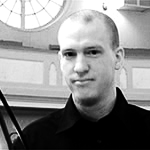 On Friday I publicly defended my dissertation Understanding Asceticism. Body and Society in the Asceticism of St Isaac of Nineveh. During three hours Professor Samuel Rubenson (right) of Lund University examined every aspect of my book and I did my best to defend it. It was a good experience, though it certainly felt eerie to hear somebody else retell what I have written. It was a good day in all, both the Disputatio and the dinner in the evening.
On Friday I publicly defended my dissertation Understanding Asceticism. Body and Society in the Asceticism of St Isaac of Nineveh. During three hours Professor Samuel Rubenson (right) of Lund University examined every aspect of my book and I did my best to defend it. It was a good experience, though it certainly felt eerie to hear somebody else retell what I have written. It was a good day in all, both the Disputatio and the dinner in the evening.
And my dissertation? Here's what its about:
The scholarly understanding of asceticism has in the recent decades shifted away from a negative view where asceticism is primarily seen as (self-)renunciation, towards a view where the focus is on asceticism as performance and recreated identity. In this study the texts of St Isaac of Nineveh (7th century) is read in order to clarify the role of the body in asceticism and the relationship between asceticism and society.
For Isaac ascetic life is a way to manage the universally human fear of death. This fear can be detected beneath several everyday worries, such as fear of sickness and other hazards, but also in the form of pursuit of riches and power. It is a central aspect of Isaac’s thinking that society works by exploiting the human weaknesses called passions. This means that a life focused towards God is a life directed against life in society, in the “world”.
In order to understand ascetic techniques such as fasting, vigils and prayer, it is helpful to see them as symbolical acts similar to rituals. A person going through a ritual is on the one hand transformed; on the other hand a message is communicated to the community. Ascetic life can be seen as such a ritual that encompasses the entire life of the ascetic. The ascetic separates him- or herself from society in order to enter into community with the angels and the coming world. In this way the ascetic communicates a distancing from society and its structures.
To understand the symbolical content of the ascetic techniques it is necessary to know their original context. To fast will send out completely different signals in a society where all meals signify community, than in a society where meals are often taken alone. In general the ascetic techniques can be interpreted as either ways to distance oneself from society or for integration into the community of the coming world (or both).
In these techniques the body plays a special role. Isaac talks about the body in two contrasting ways. When describing the role of the body in prayer it is something very positive; when describing human weaknesses the body is very negative. This duality in body-talk suggests an awareness of the capacity of the body to function as a symbol rather than some extreme body-soul dualism. Within the framework of a certain ascetic technique the body comes to represent human weakness, a body of passions. In a different context the body will signify something else.
For Isaac ascetic life is a parallel to the sacraments of the Church. Both phenomena are understood as the breaking in of the next world in this one, and thus creating in this world a tangible image of a different possible world. When Isaac is describing ecstatic experiences he does it in terms of a union like that of human and divine in Christ, or in terms of the unity between the persons of the Holy Trinity. Through asceticism the ascetic becomes theology.


